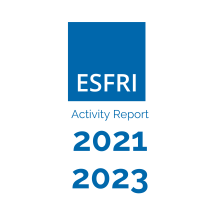IAGOS: using commercial aircraft to monitor the atmosphere
AGOS is setting up a network of commercial aircraft that will carry out observations of atmospheric composition on a scale that would be impossible to achieve using research aircraft.
AGOS, the 'In-service Aircraft for a Global Observing System' project, aims at establishing a sustainable distributed research infrastructure for the global observation of atmospheric composition. It is setting up a network of commercial aircraft that will carry out observations on a scale and in numbers that would be impossible to achieve using research aircraft and for which other measurement methods (e.g. satellites) have technical limitations.
The Research Infrastructure project was identified in the roadmap of the European Strategy Forum on Research Infrastructures (ESFRI) in 2006. The EU supported IAGOS in its design phase and its preparatory phase, which focused on the development of a set of special instruments for measurement and data transmission.
A number of European and international airlines have joined the project to fit their passenger aircraft with IAGOS instru-mentation, and several more are about to get involved. In a first phase, 10 to 20 long-range aircraft of internationally operating airlines will be equipped. The infrastructure will enable long-term observations of atmospheric composition, aerosol and cloud particles on a global scale.
How?
IAGOS deploys newly developed high-tech instruments for regular in situ measurements of atmospheric chemical species (O3, CO, CO2, CH4, NOx, NOy, H2O) 1 , aerosols and cloud particles. The data will be available in near real-time to weather services, GMES 2 service centres and atmospheric scientists around the world.
Why does this matter?
Global climate change represents arguably the most serious environmental issue facing humanity today, with implications for global political stability and the global economy. Reliable predictions of the future climate scenario are of central importance, especially for the development of mitigation strategies.
IAGOS collects crucial data for users in science and policy, achieving a level of data quality that other measurement methods would not be able to attain. This input is essential for climate research, emissions monitoring, weather prediction and air quality forecasting. More specifically, it is provided for climate models, including those used by the GMES Atmosphere Monitoring Service, and for the carbon cycle models employed for the verification of CO2 emissions and Kyoto monitoring. Regional air quality models will assimilate the project's near real-time data to improve forecasts. IAGOS data are also utilised for the calibration and validation of satellite sensors.
With the eruption of the Icelandic volcano Eyjafjöll in 2010 and the subsequent closure of European airspace, the project's cooperation with the aviation industry and instrumentation developers intensified, with the aim of designing strategies to deal with the observation of atmospheric dust, including volcanic ash. In the future, IAGOS routine observation will help to avoid such heavy losses for the economy as well as society.
Who is involved?
Germany, France, the United Kingdom and the World Meteorological Organization are involved in the project, which is coordinated by Germany. Other EU Member States have expressed their interest in participating in the IAGOS Research Infrastructure.
What is the European Added Value?
IAGOS builds on the outcomes of Mozaic 3 , a precursor project set up with support from the European Commission in the early 1990s. More than 200 peer-reviewed scientific papers in atmospheric sciences have used Mozaic data. Without continued support from the European Commission, which has now been backing this process for approximately 20 years, this joining of forces between research organisations and air transport partners across Europe would have been impossible. IAGOS is now one of the European Research Infrastructures on the ESFRI Roadmap, making a key contribution to atmospheric and climate research.
How much money has the EU invested in this?
The total budget of the Mozaic project amounted to EUR 9.7 million, of which EUR 4.4 million was provided by the EU. The EU contributed EUR 2.6 million to IAGOS as a design study under the Sixth Framework Programme (FP6) and EUR 3.3 million to the FP7 preparatory phase project IAGOS-ERI 4 (2008–2011). The cost of the construction of the IAGOS distributed infrastructure is estimated at approximately EUR 15 million.
For more information
Please visit the website www.iagos.org or contact the Project Coordinator: Dr Andreas Volz-Thomas, Forschungszentrum Jülich, email: a.volz-thomas@fz-juelich.de





